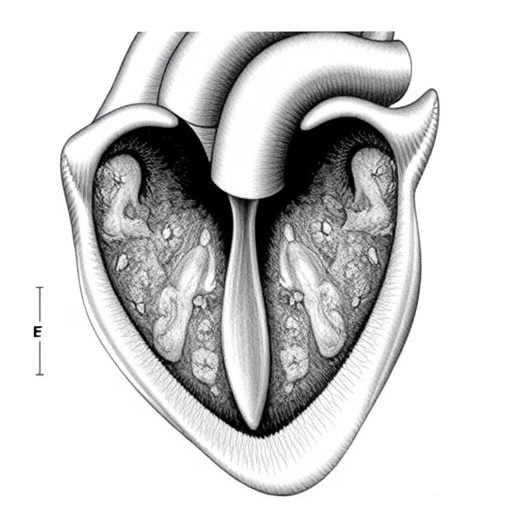In a groundbreaking study poised to reshape our understanding of physical activity adherence after cardiovascular diagnosis, researchers have unveiled a sophisticated model that integrates neuroanatomical brain connectivity with social and environmental determinants of health. Conducted on a robust cohort of older adults, this investigation deciphers the complex interplay between brain networks and external factors to predict which individuals will successfully elevate their physical activity to levels endorsed by global health guidelines.
The study followed 295 cognitively intact yet physically inactive older individuals from the UK Biobank, all recently diagnosed with cardiovascular conditions. Over approximately four years, researchers meticulously monitored their transition toward moderate-to-vigorous physical activity, employing both subjective self-reports and objective accelerometer data to capture a comprehensive behavioral profile. Such dual-method tracking ensures a high-fidelity assessment of true activity change over time.
Central to the analysis was the use of cutting-edge machine learning algorithms designed to parse through an intricate web of variables. This approach identified predictive biomarkers not only in traditional demographic and behavioral data but, notably, in resting-state functional connectivity (RSFC) patterns across specific neural circuits. By quantifying node size—which reflects the frequency of brain regions involved—and edge thickness corresponding to the strength of connectivity, the authors were able to visualize a neuroanatomical “fingerprint” linked to physical activity uptake.
Key brain networks found to influence behavior change encompassed those involved in executive function, self-control, and planning. The results emphasize the prefrontal cortex’s and associated subnetworks’ role in orchestrating goal-directed behavior pertinent to lifestyle adjustments. Interestingly, purple-hued connections indicated positive RSFC enhancements correlated with increased activity, while grey edges denoted negative associations, revealing a nuanced balance of connectivity that predicts favorable outcomes.
Beyond neural factors, social and environmental variables emerged as paramount. Access to urban green spaces showed a profound influence, highlighting the vital role of the physical environment in facilitating or hindering exercise routines. Moreover, robust social support from friends and family constituted another pillar fostering sustained activity engagement, underscoring the synergistic effect of interpersonal networks on health behavior.
Cognitive abilities, particularly executive function and working memory, were enhanced among participants who increased their physical activity levels, offering evidence of a bidirectional relationship between brain health and exercise. These findings lend support to the hypothesis that brain plasticity and cognitive reserve can be boosted through improved lifestyle habits, even after cardiovascular diagnosis.
The researchers’ multimodal predictive model—combining neuroimaging, behavioral data, and contextual information—achieved unprecedented accuracy in forecasting who would adhere to heart-healthy activity regimens. This advancement holds significant potential for clinical applications by enabling personalized intervention strategies that account for an individual’s unique brain-behavior-environment profile.
Furthermore, the study underscores a paradigm shift away from viewing physical activity adherence purely through the lens of personal motivation. Structural and contextual factors, such as neighborhood infrastructure and social milieu, present critical determinants that can either facilitate or thwart efforts to engage in regular exercise. This broader perspective invites policymakers to consider urban planning and community engagement initiatives as integral components of public health strategies aimed at combatting cardiovascular disease.
Intriguingly, the findings open avenues for future research exploring how targeted cognitive training or neuromodulation techniques might bolster executive networks to promote sustained physical activity. Tailored therapies aimed at enhancing connectivity in specific RSFC circuits could empower patients with cardiovascular conditions to overcome barriers to exercise.
This study exemplifies the power of integrating interdisciplinary perspectives—from neurobiology to social science—in addressing complex health challenges. By decoding the multimodal “fingerprint” that predicts physical activity behavior change, the research offers a roadmap for precision medicine approaches that enhance quality of life and reduce cardiovascular risk on both individual and population levels.
As global populations age and cardiovascular morbidity rises, such innovative tools become increasingly vital. Encouraging moderate-to-vigorous physical activity remains a cornerstone of therapeutic guidelines, yet adherence rates lag. Harnessing brain connectivity patterns and social determinants as biomarkers and intervention targets could revolutionize how clinicians support patients in embracing active lifestyles post-diagnosis.
The study’s implications resonate beyond the clinic, touching on public health policy, urban design, and community health promotion. Emphasizing the importance of green spaces and social networks aligns with emerging frameworks that prioritize holistic, ecosystem-based approaches to disease prevention and health optimization.
Collectively, these insights herald a new era in cardiovascular care—one where the convergence of neuroscience, behavioral science, and social context informs tailored, effective strategies to motivate and sustain physical activity. By unraveling the brain-behavior-environment nexus, researchers pave the way for transformative interventions that enhance resilience and foster heart health across the aging population.
Subject of Research: A multimodal investigation linking brain resting-state functional connectivity, cognitive function, environmental factors, and social determinants to predict physical activity behavior changes in older adults after cardiovascular diagnosis.
Article Title: Social determinants of health and brain connectivity predict physical activity behavior change after new cardiovascular diagnosis
News Publication Date: 21-Oct-2025
Image Credits: Thovinakere et al.
Keywords: Public health, brain connectivity, physical activity, cardiovascular disease, machine learning, resting-state functional connectivity, executive function, social determinants, environmental factors, green space, cognitive function, behavior change
Tags: accelerometer data in studiescardiovascular diagnosis impactcognitive health and activityenvironmental factors in healthmachine learning in health researchmoderate-to-vigorous physical activity levelsneuroanatomical brain connectivityolder adults physical activityphysical activity adherencepredictive biomarkers in exercisesocial determinants of healthUK Biobank research study





